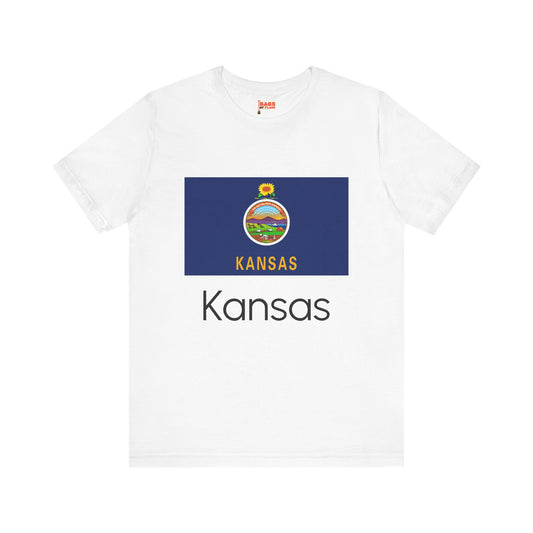-
Kansas Backpack
Regular price $59.79 USDRegular priceUnit price / per -
Kansas Pillow
Regular price $22.65 USDRegular priceUnit price / per -
Kansas Mug
Regular price $11.65 USDRegular priceUnit price / per -
Kansas Trucker Cap
Regular price $14.90 USDRegular priceUnit price / per -
Kansas Leather Patch Hat
Regular price $18.85 USDRegular priceUnit price / per -
Kansas Flag Sweatshirt
Regular price $34.15 USDRegular priceUnit price / per -
Kansas Inspired Sweatshirt
Regular price $34.15 USDRegular priceUnit price / per -
Kansas Sweatshirt
Regular price $34.15 USDRegular priceUnit price / per -
Kansas Hoodies
Regular price $34.40 USDRegular priceUnit price / per -
Kansas T-shirts
Regular price $22.79 USDRegular priceUnit price / per -
Kansas Flag Hoodies
Regular price $34.40 USDRegular priceUnit price / per -
Kansas Inspired Hoodie
Regular price $34.40 USDRegular priceUnit price / per -
Kansas Inspired T-shirt
Regular price $22.79 USDRegular priceUnit price / per -
Kansas Flag T-shirts
Regular price $22.79 USDRegular priceUnit price / per
Collection: US State: Kansas KS flag
Like many other state flags in the United States, the Kansas flag has a rich history and symbolism that reflects the state's unique identity. From its design to its colors and symbols, the flag of Kansas represents the state's values and heritage. We will explore the facts and controversies surrounding the Kansas flag, exploring its design, historical context, symbolism, current relevance, and additional interesting facts.
Overview of the Kansas Flag Design and Colors

The Kansas flag presents a vibrant tableau set against a dark blue backdrop, symbolizing the vast skies above the state. At its heart lies the state seal encircled by a sunflower, the state emblem, positioned at the peak of a gold and blue bar. This incorporation of the sunflower not only adds a distinctive yellow to the palette but also introduces green, mirroring the lush landscapes of Kansas.
The state name "Kansas" arches gracefully above the seal in bold yellow lettering, adding a touch of brightness and contrast. This color scheme is visually appealing and laden with symbolism, with the blue representing loyalty and strength, the yellow reflecting Kansas's agricultural heritage and optimism, and the green signifying growth and renewal. Together, these elements and colors weave a story of Kansas's rich history, natural beauty, and the enduring spirit of its people.
Historical Context of the Kansas Flag
The Kansas flag, officially adopted in 1927, boasts a history marked by evolution and reflects the state's identity. Before its official adoption, the flag's design and symbolism underwent several significant changes, underscoring the dynamic nature of Kansas's heritage.
- Initial Design and Adoption: The initial flag design was introduced in 1925, two years before its official adoption. The decision to adopt a state flag was influenced by the desire to have a distinctive emblem at national events, specifically the marking of the U.S. Navy battleship USS Kansas.
-
Evolution Over Time:
- The flag, featuring the state seal and a sunflower over a blue field, was officially adopted in 1927.
- 1961 marked the addition of the word "Kansas" below the state seal, an amendment to foster state recognition.
-
Historical Events and Influences:
- The state seal, designed in 1861 and prominently featured on the flag, encompasses symbols of Kansas's early history, including its role in westward expansion.
- The 1920s adoption period coincided with a burgeoning sense of state identity and pride, further cemented by the flag's adoption.
These elements collectively highlight the Kansas flag's historical context, emphasizing its role as a symbol of the state's evolving identity and its roots in both local and national history.
Symbolism Behind the Kansas Flag
The intricate elements of the Kansas flag carry deep meanings, illustrating the state's values and history. At the center, the state seal is a testament to Kansas's integral role in America's westward expansion, featuring a landscape filled with symbols of progress and exploration, such as a river and steamboat and pioneers in a wagon train. The imagery conveys the courage and determination of early settlers. The Native American hunting of bison on the plains symbolizes the state's respect for its indigenous history and the natural abundance that once defined the region.
Above this, the cluster of 34 stars stands as a proud nod to Kansas's position as the 34th state admitted to the Union, highlighting Kansas's unity and equal status with the other states. Encircling the seal, the sunflower is not just the state flower but also a symbol of fertility, resilience, and beauty, mirroring Kansas's agricultural dominance and the hardy spirit of its people. Each element of the flag's design serves as a chapter in the state's story, from its pioneering past to its prosperous present, intertwining nature, history, and ambition in the fabric of Kansas's identity.
Current Relevance of the Kansas Flag
Today, the flag of Kansas remains a vibrant symbol within the state and across various platforms, reflecting its historical roots while serving contemporary purposes. Its relevance in today's context is showcased through:
- Public Display: The flag is prominently flown at state government buildings, educational institutions, and parks, reinforcing state pride and unity.
- National and Military Ceremonies: Its presence in national events and military ceremonies underscores Kansas's contributions to the United States and honors those who have served.
- State Identity: The Kansas flag symbolizes the state's identity through sports events and cultural gatherings, bringing together residents and expatriates.
Despite its widespread use and significance, the flag has sparked discussions that highlight evolving perspectives on its symbolism:
- Controversies: Some view the flag's design as not fully representative of Kansas's diverse population, advocating for a design that reflects modern values and inclusivity.
- Debates: Discussions often focus on balancing respect for historical heritage with the need for a symbol that resonates with today's societal values.
These ongoing debates and the flag's ubiquitous presence affirm its importance in Kansas's social and political landscape, reflecting a state deeply rooted in its past yet continually evolving.
Additional Facts and Protocols for the Kansas Flag
When it comes to the display and reverence of the Kansas flag, certain protocols and intriguing tidbits stand out, underscoring its significance and the pride Kansans have in their state symbol. Here's a closer look:
-
Display Protocols:
- The Kansas flag should be flown higher than any other flag, reflecting its sovereign status within the state.
- Care must be taken to prevent the flag from touching the ground, preserving its dignity and respect.
- Unlike some states, Kansas does not mandate specific dimensions for the state flag when displayed alongside the US flag, offering flexibility in various ceremonial and public contexts.
-
Interesting Tidbits:
- Adding "Kansas" to the flag in 1961 aimed to bolster state identity and recognition, an essential aspect given the flag's role in national and international settings.
- Despite the robust set of protocols for flag display, Kansas's guidelines remain notably silent on certain specifics, such as flag size relative to the national flag, showcasing a blend of tradition and practicality unique to the state.
These guidelines and facts highlight the respect and esteem with which the Kansas flag is held, reflecting its historical significance and ongoing relevance in Kansans' lives.




























